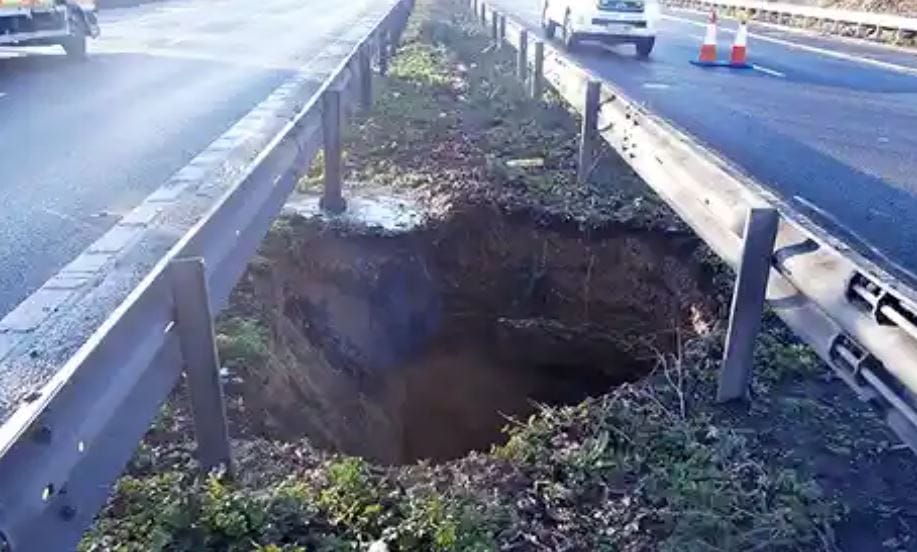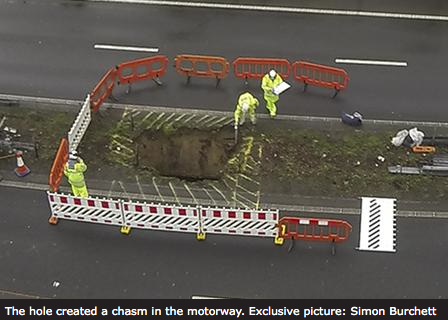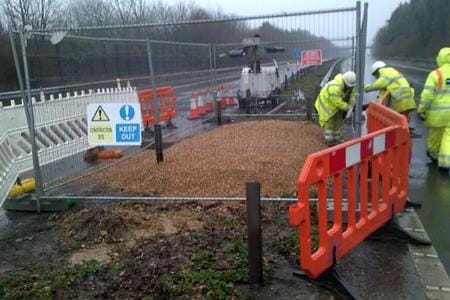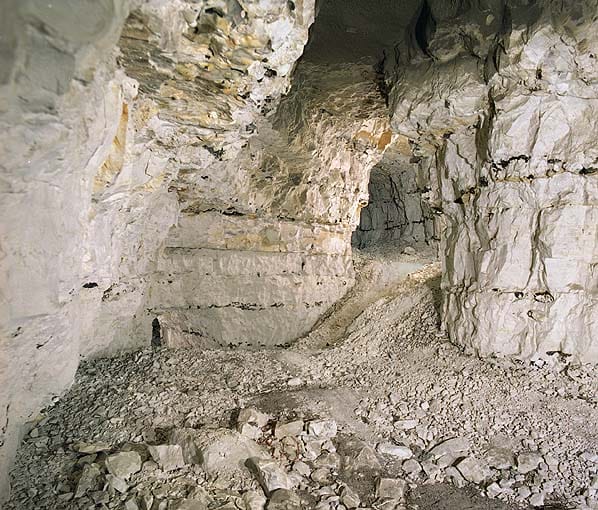Things are not always what they seem

A 15ft-deep hole appeared on M2 motorway in Kent, UK on 11th of February 2014.

The 15ft chasm that has closed the motorway, also caused traffic chaos across the area in UK and it was backfilled within a week with 40tn of pea shingle material which was used to stabilise the hole. Geotechnical investigations also confirmed that the ground beneath the area is safe for traffic.

But what caused that hole?
The official statement of the highways Agency in UK was that “the hole that appeared is believed to be a dene hole; a historic man made hole which may have been used to mine for chalk hundreds of years ago. The hole was filled in when the M2 was constructed however recent wet weather contributed to the destabilisation of the ground causing the hole to re-appear.”
What are the dene holes?
A dene hole is an underground structure consisting of a number of small chalk caves entered by a vertical shaft. UK landscape contains hundreds, if not thousands, of deneholes of various types and the origins and purpose of these man-made excavations were the subject of intense interest and debate in the latter 19th century.
Many theories were put forward to explain why these structures were excavated, varying from Druids’ temples, flint mines and ancient hiding places to elaborate animal traps. By the end of the 19th century, however, opinion had polarised between ancient grain storage pits and chalk mines.
It’s not the first time…
- December 2012: a denehole threatened to swallow an Essex home

- March 1988: a sinkhole from an ancient chalk mine swallowed a bus in Earlham Road in Norwich

What triggers them?
Most of the times these sinkholes are caused by excessive flooding and heavy rain (like recently in UK). Rain water widens and erodes existing cracks and joints in chalk rock which lies beneath a clay layer. Water is more likely to do this when it is acidic, so the most likely places for a sink hole to open are where chalk soil is beneath acidic sandy or clay soil.
When this happens in an area where ancient chalk mines exist, it become easier for the water to penetrate already excavated and cracked areas.
Proper geotechnical investigation could probably reveal some of these ancient cavities or chalk mines but it’s doubtful how possible it is to avoid them completely (especially after heavy rain and flooding).

Member discussion